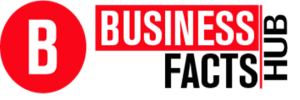Running a small business is a challenge, which grows exponentially when onboarding new employees and getting them up to speed with their job tasks. An estimated 88 percent of employees in the United States of America feel that their employer did a horrible job with training staff and new employees. Knowing what to expect will aid you in engaging new employees.
Using a training guide is an excellent way to start training new staff members, but there are specific steps for a flawless onboarding process. The good news is that you’ve found the perfect guide to improving your training for new staff members in 2023.
Keep reading to boost your training processes with five onboarding tips today!
1. Create a Plan
Creating a plan for training staff and employees is essential when you start expanding your business. If you want your new hires to stick around, you can’t go into the onboarding process without one. You’ll waste everyone’s time with information and training that doesn’t help anyone.
Write everything down that your new staff members should know. Lay out the knowledge and skills they’ll need in order to perform the job at a high level. You can use that knowledge to start basic training before moving to more complex training.
2. Schedule Consistent Training Sessions
Consistent training is a critical step you must take to start training staff to reach their potential. Frequent training sessions will help your new staff members maintain their skills while adding new ones to their toolboxes. You can use these sessions to notify your staff of changes in addition to training staff on new skills with help from RightAngle consulting.
3. Use Employees as Trainers
You won’t have time to train each new staff member on your own, so delegate the task of training staff to trusted employees. It’s one less burden on your shoulders, and it prepares your existing employees for bigger roles in the future. Ask your trusted employees to pass their knowledge and skills on to new hires when training and onboarding new employees.
4. Cross-Train Your Staff
The most skills that your employees have, the more flexible your business becomes. Cross-training your staff allows you to cover issues when employees are on vacation or out sick. It also allows your employees a better understanding of the tasks involved with your business operations.
5. Set Goals
Goals are the ultimate motivator, and you should ensure that your new hires set goals when you start training staff. These goals will give you insight into whether your onboarding tips are making a difference. Use these goals to adjust your training methods for the best small business operations.
Take Training Staff to New Heights
Training staff and onboarding new employees will help your business grow and thrive, though you must set goals and teach your new staff members the essentials after hiring them. Delegate training new staff to trusted employees and cross-train your workers for greater flexibility. Stay consistent with training sessions to continue growing skills and knowledge.
Are you ready to grow your small business? Check out the rest of our blog articles for more engaging business articles today!










